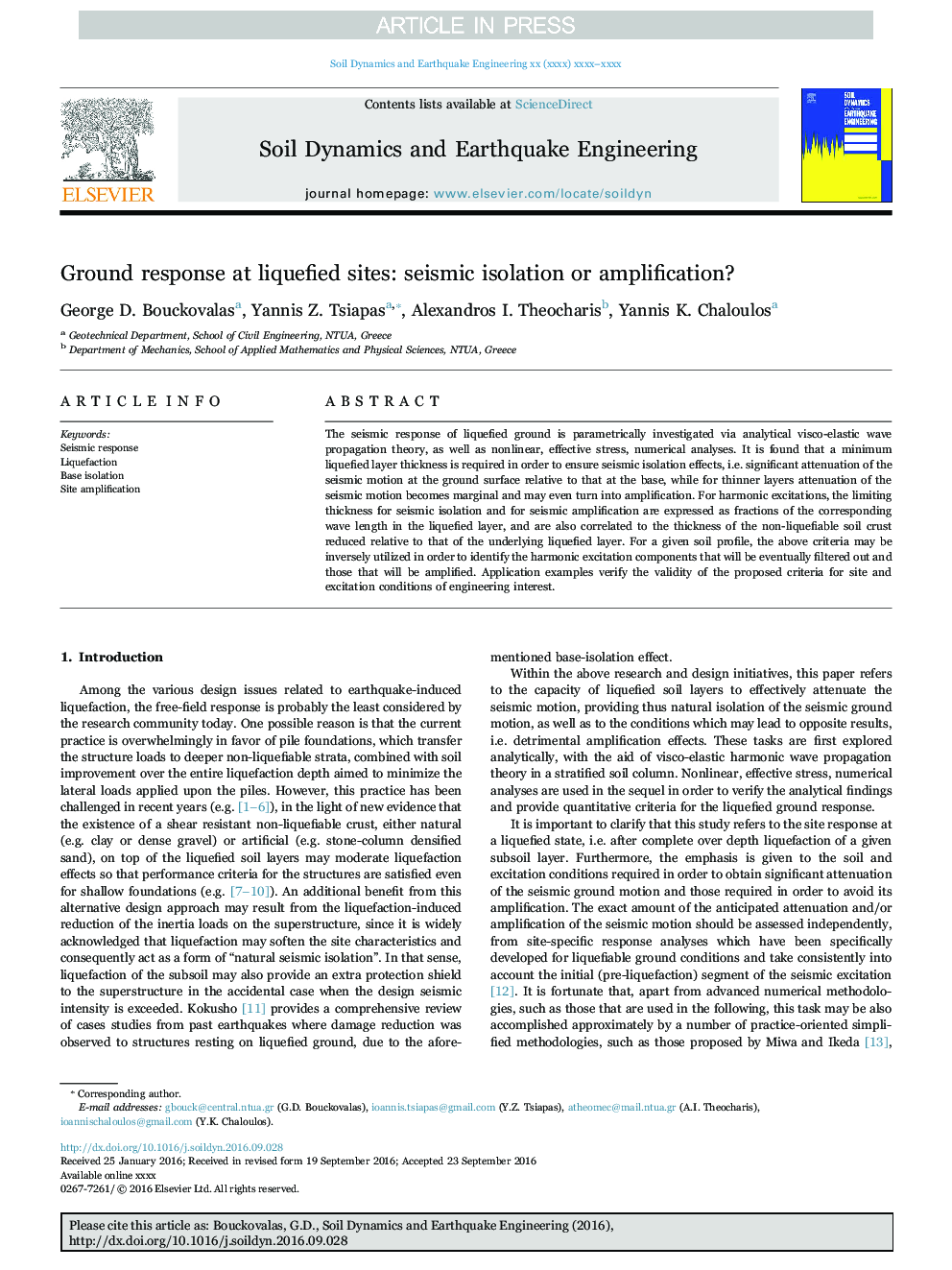| Article ID | Journal | Published Year | Pages | File Type |
|---|---|---|---|---|
| 6771318 | Soil Dynamics and Earthquake Engineering | 2016 | 11 Pages |
Abstract
The seismic response of liquefied ground is parametrically investigated via analytical visco-elastic wave propagation theory, as well as nonlinear, effective stress, numerical analyses. It is found that a minimum liquefied layer thickness is required in order to ensure seismic isolation effects, i.e. significant attenuation of the seismic motion at the ground surface relative to that at the base, while for thinner layers attenuation of the seismic motion becomes marginal and may even turn into amplification. For harmonic excitations, the limiting thickness for seismic isolation and for seismic amplification are expressed as fractions of the corresponding wave length in the liquefied layer, and are also correlated to the thickness of the non-liquefiable soil crust reduced relative to that of the underlying liquefied layer. For a given soil profile, the above criteria may be inversely utilized in order to identify the harmonic excitation components that will be eventually filtered out and those that will be amplified. Application examples verify the validity of the proposed criteria for site and excitation conditions of engineering interest.
Related Topics
Physical Sciences and Engineering
Earth and Planetary Sciences
Geotechnical Engineering and Engineering Geology
Authors
George D. Bouckovalas, Yannis Z. Tsiapas, Alexandros I. Theocharis, Yannis K. Chaloulos,
